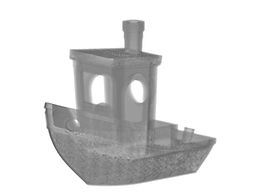"From the housing to the seperator"


To meet the challenges of the future, electrical energy storage is becoming increasingly important, whether in the automotive or stationary storage sector. However, these technologies come with their own unique challenges in development and manufacturing .
The development and, in particular, the production of lithium-ion cells and batteries are highly complex and time-consuming processes. To keep development time and costs as low as possible, all potential errors in the systems must be detected as early as possible.
Whether it's damaged batteries or test objects from our test center, with extensive experience, state-of-the-art technology, and precise documentation, our battery analysis team doesn't miss a thing!
This includes, for example, 3D measurements of deformations, digital torque recordings during disassembly and all electrical measurements, such as high-voltage insulation resistance.



When manufacturing battery cells, a flawless, clean production process is essential for a high-performance battery. If, for example, particles get into the cell during production, this can lead to a loss of performance and capacity, or in the worst case, even a fire during battery operation.
We therefore examine every component of the cells with the utmost care in our cell analysis laboratory and carefully document the entire analysis.
Our in-house computer tomography scanner allows us to quickly identify battery cells that require analysis and provide rapid, non-destructive results for deciding on the next steps.
If particles or false inclusions are found during dissection, they can be directly analyzed for their material properties using our scanning electron microscope in order to draw conclusions about the possible origin of the particles.
High accuracy
Absolute transparency
Non-destructive analysis
Fast results

We have the methodological expertise for the safe disassembly of charged and uncharged cells.
The entire process is documented photographically in great detail.
Results can be exchanged quickly and transparently, and decisions for further analyses can be made quickly based on them.

If particles are found, the cell analysis can be directly transferred to an SEM spectrum analysis in order to more easily draw conclusions about the origin of foreign material on the cell layers.

In addition to CT analyses and cell dissection, our laboratory can produce micrographs of components, such as welded joints, for detailed material analyses.

With our industrial CT scanner, we can support a wide range of analyses, from defect detection in lithium-ion cells to void analysis in medical prostheses to non-destructive testing of 3D-printed parts.



